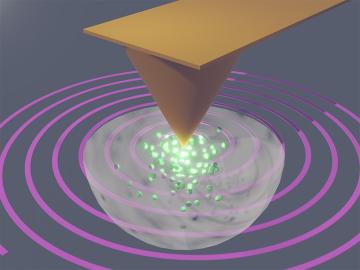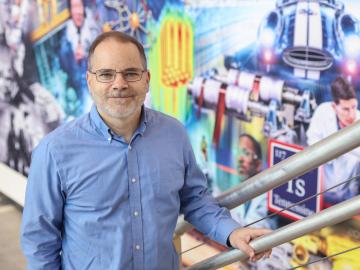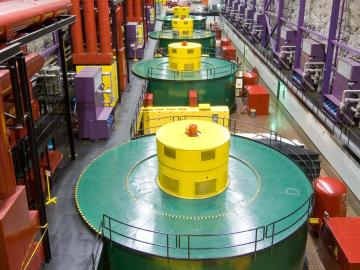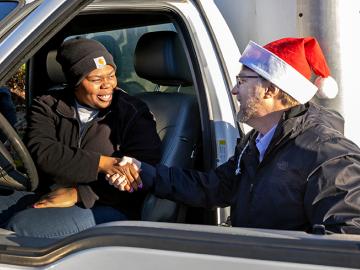Filter News
Area of Research
Date
News Topics
- 3-D Printing/Advanced Manufacturing (7)
- Advanced Reactors (2)
- Artificial Intelligence (15)
- Big Data (5)
- Bioenergy (7)
- Biology (9)
- Biomedical (5)
- Biotechnology (4)
- Buildings (10)
- Chemical Sciences (8)
- Clean Water (3)
- Climate Change (14)
- Composites (3)
- Computer Science (13)
- Critical Materials (2)
- Decarbonization (14)
- Emergency (1)
- Energy Storage (6)
- Environment (16)
- Exascale Computing (2)
- Fossil Energy (2)
- Frontier (3)
- Fusion (4)
- Grid (3)
- High-Performance Computing (11)
- Isotopes (4)
- ITER (1)
- Machine Learning (5)
- Materials (10)
- Materials Science (8)
- Mathematics (1)
- Microscopy (1)
- Nanotechnology (2)
- National Security (9)
- Net Zero (3)
- Neutron Science (8)
- Nuclear Energy (4)
- Partnerships (8)
- Physics (1)
- Polymers (3)
- Quantum Computing (4)
- Quantum Science (8)
- Security (1)
- Simulation (8)
- Space Exploration (2)
- Statistics (2)
- Summit (4)
- Sustainable Energy (10)
- Transportation (8)
Media Contacts

The American Society of Heating, Refrigeration and Air-Conditioning Engineers, or ASHRAE, selected Jason DeGraw, a researcher with ORNL, as one of 23 members elevated to Fellow during its 2024 winter conference.

Research led by ORNL’s Marti Checa and Liam Collins has pioneered a groundbreaking approach described in the journal Nature Communications that enables visualizing charge motion at the nanometer level, or one billionth of a meter, but at speeds thousands of times faster than conventional methods.

Researchers at the Statewide California Earthquake Center are unraveling the mysteries of earthquakes by using physics-based computational models running on high-performance computing systems at ORNL. The team’s findings will provide a better understanding of seismic hazards in the Golden State.

David Sholl, director of the Transformational Decarbonization Initiative at ORNL, has been elected a member of the National Academy of Engineering for his contributions in addressing large-scale chemical separation challenges, including carbon dioxide capture, using quantitative materials modeling.

Scientists at ORNL and the University of Tennessee have developed an algorithm to predict electric grid stability using signals from pumped storage hydropower projects. The method provides critical situational awareness as the grid increasingly shifts to intermittent renewable power.

ORNL climate modeling expertise contributed to a project that assessed global emissions of ammonia from croplands now and in a warmer future, while also identifying solutions tuned to local growing conditions.

Scientists at ORNL are looking for a happy medium to enable the grid of the future, filling a gap between high and low voltages for power electronics technology that underpins the modern U.S. electric grid.

Ilenne Del Valle is merging her expertise in synthetic biology and environmental science to develop new technologies to help scientists better understand and engineer ecosystems for climate resilience.

ORNL researchers have developed a novel way to encapsulate salt hydrate phase-change materials within polymer fibers through a coaxial pulling process. The discovery could lead to the widespread use of the low-carbon materials as a source of insulation for a building’s envelope.

ORNL employees contributed over $828,000 to local nonprofits through the lab’s employee giving programs in 2023. ORNL’s managing contractor, UT-Battelle, provided an additional $139,600 in support of employee efforts. In addition, ORNL employees recorded over 1,497 volunteer hours, serving 56 nonprofits. With the value of these volunteer hours estimated at $36,232, total employee-led contributions for 2023 were valued at more than $1 million.




